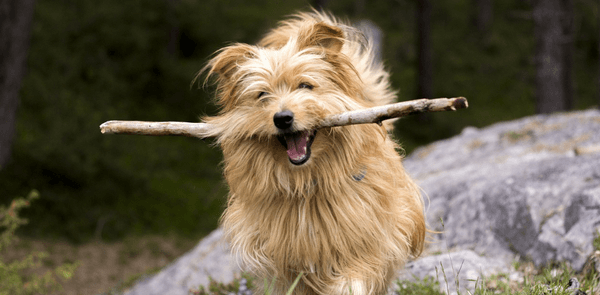
Summer is the time to get outside and soak up the famous Colorado Springs Vitamin D-filled sunshine rays that brighten our days and lift our spirits! And it’s been beautiful outside right lately! The recent monsoon weather has resulted in gorgeous green grass and flowering yards everywhere you look.
Our backyards are our outdoor sanctuaries – a place to enjoy gardening, playing with our pooches or perhaps having a backyard gathering with friends and family.
And while your dog no doubt loves being outdoors as much as you, it’s important you are aware of the hidden dangers in your own backyard.
Do you know there are natural items in your backyard can be hazardous or even poisonous to your pet?
Take a moment to review these 10 backyard dangers that can be problematic for your dog.

-
Pretty Flowers
Most dog owners know they need to protect their dog from poisonous plants. But you may not know just how many popular plants are toxic to your dog. The American Society for the Prevention of Cruelty to Animals (ASPCA) offers a comprehensive list of the plants that are dangerous for dogs.
Some common plants to watch out for are the American holly, periwinkle, azaleas, English ivy, begonias, elephant ears, buttercups, chrysanthemums, daffodils, dahlias, daisies, and daffodils. If you suspect your dog has ingested a poisonous flower or plant call Animal Poison Control Center (888) 426-4435 or take him to your vet immediately.
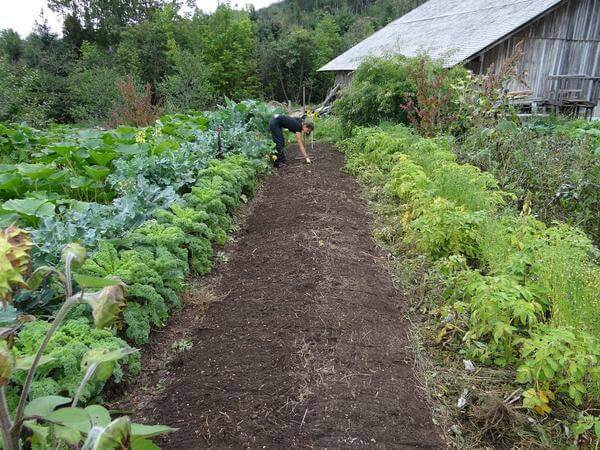
-
Yummy Vegetable Garden
We know that some flowers are poisonous to our dogs, but did you know there are very common vegetable garden plants that can be just as harmful to your dog? Some commonly grown produce in backyard gardens you should keep your canine companion away from include:
- the green part of the tomato plant
- apple trees
- garlic
- chives
- cherry trees
- grapefruit trees
- fig trees
- lemon trees
- rhubarb
- tarragon
- peach trees
- orange trees
- onions
- mint
If you have an established garden already planted you could build a fence around it with a gate so your dog doesn’t accidentally eat something that may smell good but can cause serious harm.
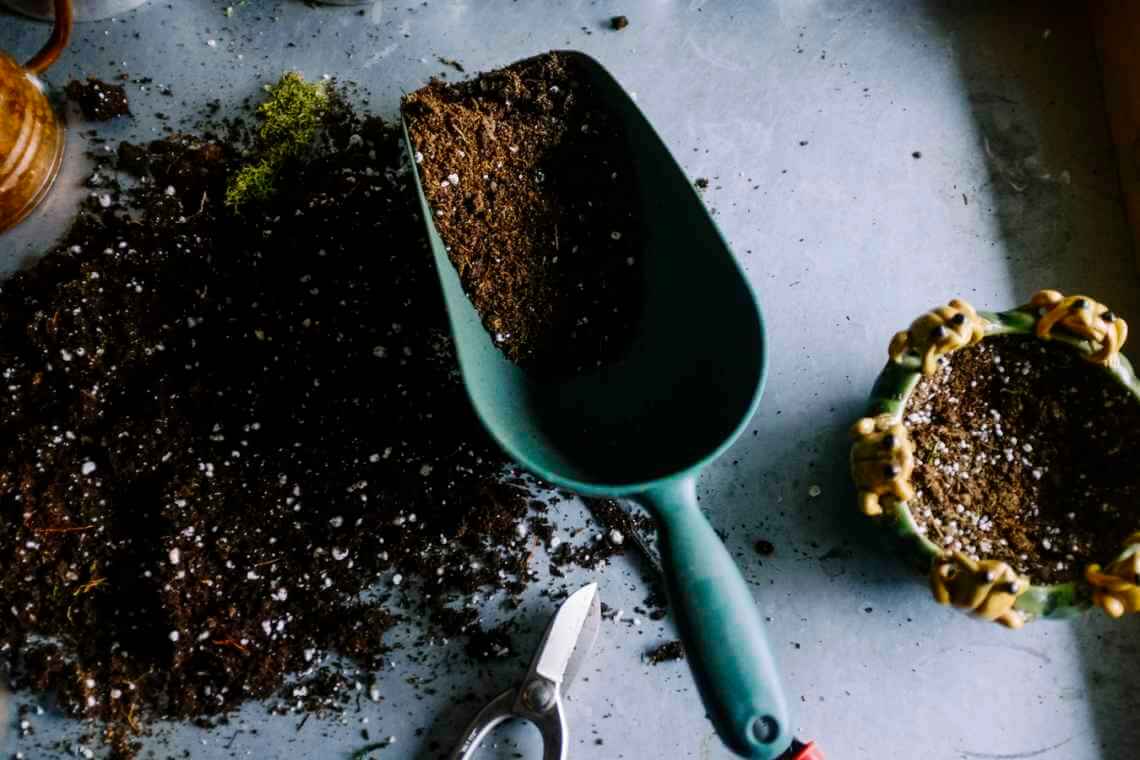
-
Scary Organic Fertilizers
You probably already know many fertilizers are harmful to dogs and people. Many people think using an organic fertilizer is a better option, however, there are a couple of organic fertilizers that can make your dog very sick.
Blood meal and bone meal are both organic compounds used to increase the nitrogen content of the soil. Blood meal can cause diarrhea, vomiting, and severe pancreatitis. Bone meal can create a hard rock-like ball in the stomach that can obstruct the gastrointestinal tract resulting in a lot of pain and surgery in order to remove it.
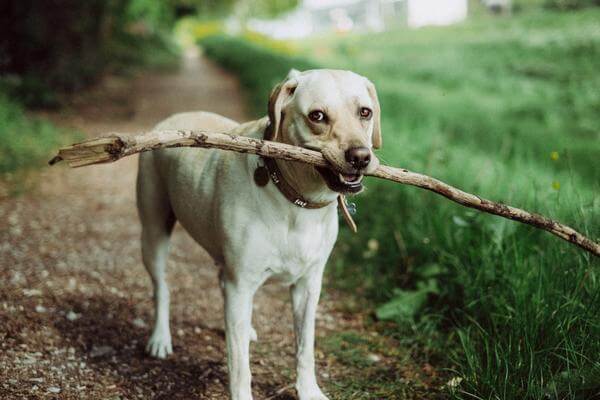
-
Wood Sticks
Playing fetch with a stick might seem pretty harmless, and most times it is, but sticks can seriously harm a dog or a tender-mouthed puppy.
There are probably lots of sticks in your backyard, especially after all the storms we’ve been having, but playing with and chewing on sticks can possibly cause tongue splinters or in the mouth, causing pain and injury.
Sticks have also been known to pierce right through a dog’s tongue. If a dog swallows a stick, it can injure their throat or an internal organ.
A dog toy from the store is a safer alternative than a stick.
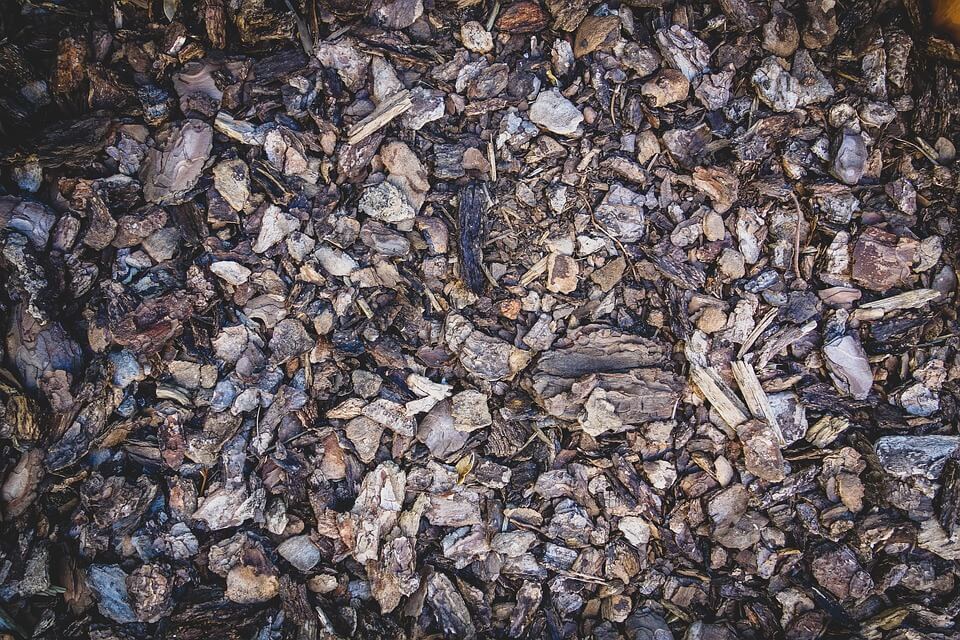
-
So Much Mulch
Mulch is usually used to keep weeds under control and looks nice in flower beds or gardens. Many dogs like to chew on mulch, which may seem harmless, except it can cause harm.
Cocoa Mulch is especially dangerous for dogs. In addition to the stick dangers listed above, it contains theobromine, an ingredient that is toxic to dogs. Better mulch options are pine, cedar, or hemlock, which are not poisonous.
If you decide to use mulch keep in mind that dogs can still choke on mulch and should be supervised around it at all times.
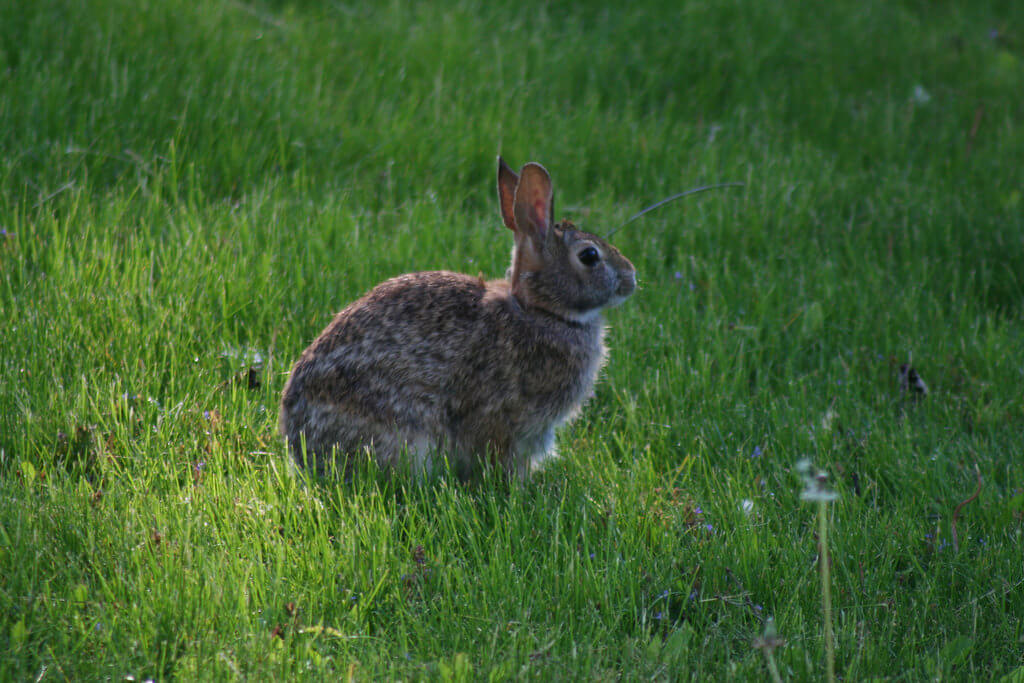
-
Uninvited Wild Animals
In Colorado Springs, you may encounter dangerous and unwanted animals in your backyard.
There are rabbits in the area infected with tularemia (also called “rabbit fever”), a bacterial infection that can be passed to domestic animals as well as people even if the rabbit or other infected animal is dead. This is another good reason to keep your dog on a leash when they are outside of your yard.
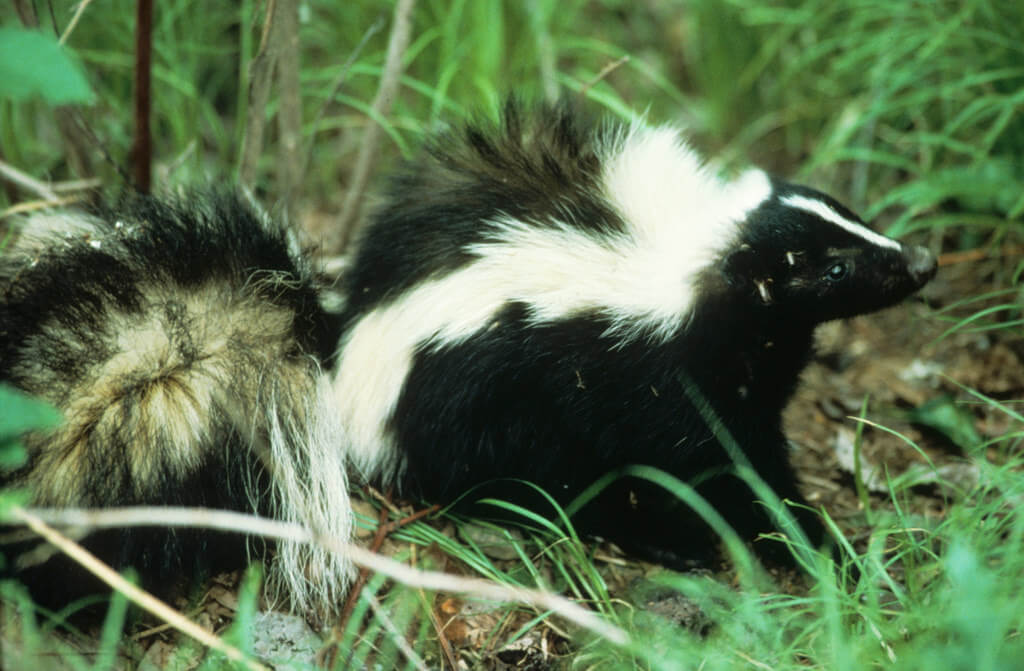
Other wild animals and insects to watch for include: rattlesnakes, brown recluse spiders, pikas, foxes, coyotes, porcupines, and skunks. Ticks and mosquitoes can also carry diseases and infect your dog if they bite.
Educating yourself on the wild animal dangers in your area will help to keep you and your dog safe.
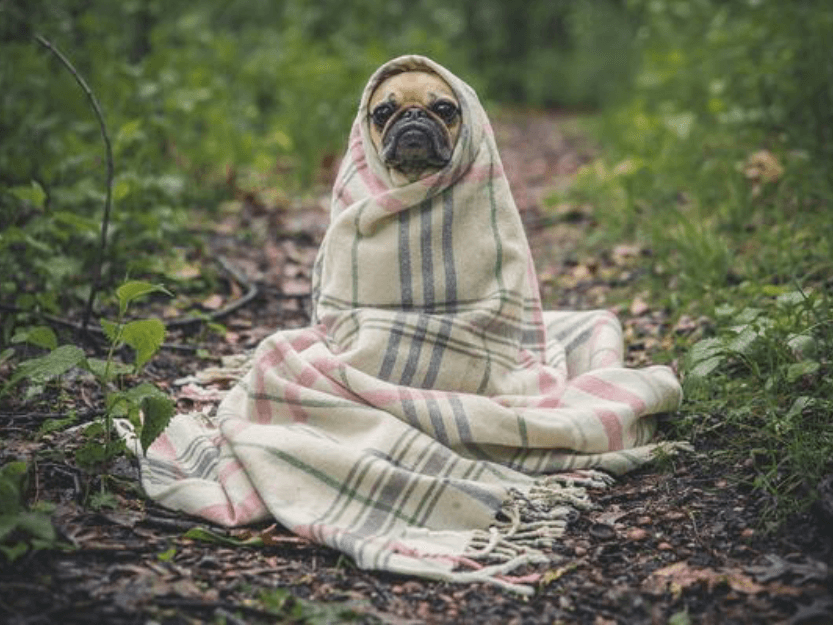
-
Fast-Changing Weather
Getting too hot or too cold can cause your dog serious health risks. Here in Colorado especially, the weather can change very rapidly from cool to very hot, or from warm to wet and cold.
Keep an eye on your dog while outside; pay attention to changes in the weather and bring your dog in out of excessive heat or a storm. Keep in mind the breed of your dog as it relates to weather conditions. Some dogs are more susceptible to overheating (check out this post on protecting your dog from summer heat). There is also the threat of lightening in our area. If lightening is spotted or you hear thunder, get your dog inside right away.
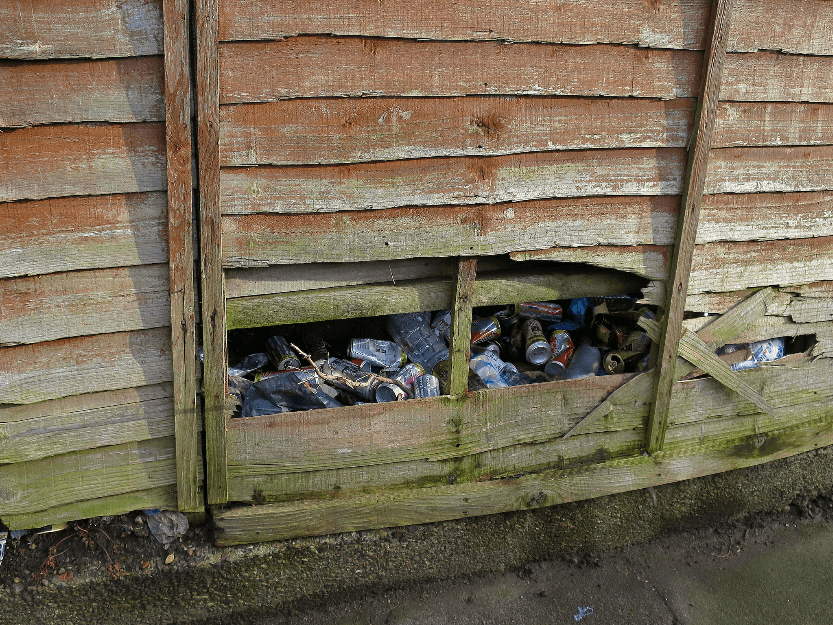
-
Finicky Fences
Before letting your dog run wild in your backyard it’s always a good idea to do a perimeter walk to make sure there are no holes in, or under, your fence where your dog can get out.
Even small gaps in boards can allow your dog to wriggle their way through the space and out to freedom.
It’s also good to double check any gates that lead into your backyard and make sure they are secure.
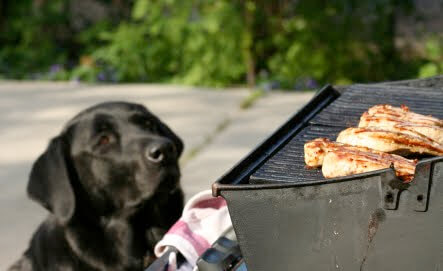
-
Backyard BBQ Season
BBQ season is one of the best times of the year. The smell of your neighbor BBQing can make you start drooling and instantly hungry, and I’m sure your dog loves the smells too.
But there are obvious dangers for a dog when you are grilling your supper in the backyard. The smell can be pretty tempting to your dog, and they may jump up to see what’s on the barbeque they can eat. By doing so they may lean their paws on the hot grill causing severe burns. Also, going under the BBQ may cause their fur to catch fire, or burn their skin.
It is smarter to BBQ far away from where your dog is allowed in the yard, or keep your dog inside while you BBQ outside, for their own safety.
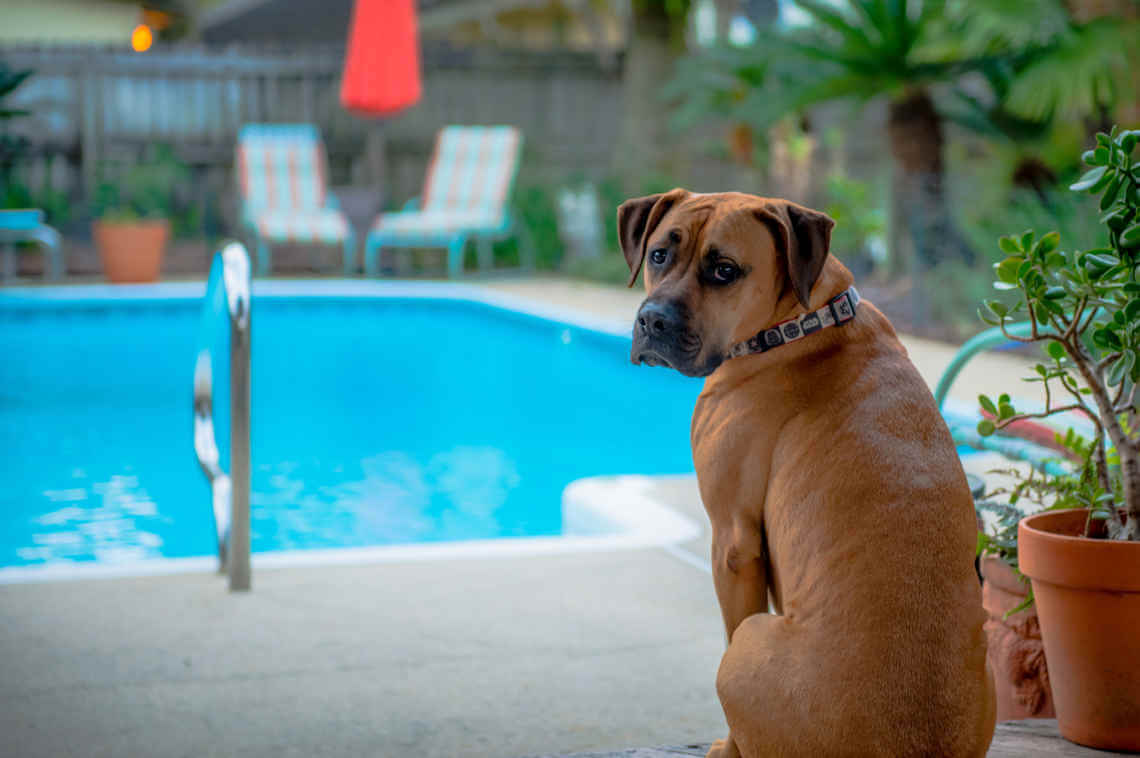
-
Refreshing Pool
If you’re lucky enough to have one, a pool is an amazing part of a backyard. However, there may be dangers lurking for your dog. Chlorine in your pool won’t poison them but can make them feel sick if they drink it. The biggest health risk is drowning. You might be surprised at how many dogs drown in pools during the summer. Don’t assume just because they can paddle for a bit that they will be fine every time they jump in. Their legs can get tired very fast. So keep an eye on your dog around any pools and especially if they are swimming in it.
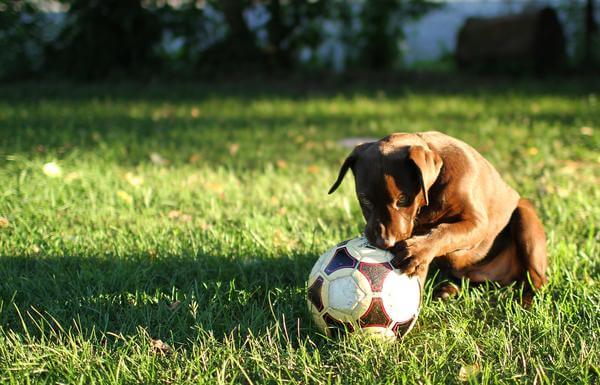
If you think your dog has come in contact with something poisonous, contact your emergency veterinarian immediately, or call the Animal Poison Control Center at (888) 426-4435. They may be able to help diagnose a problem or instruct you on what to do if your dog ingests something they shouldn’t.
Keep your canine baby safe this summer by keeping a close eye on them when they are in the backyard. Never let them run around for long periods of time without supervision when outside.
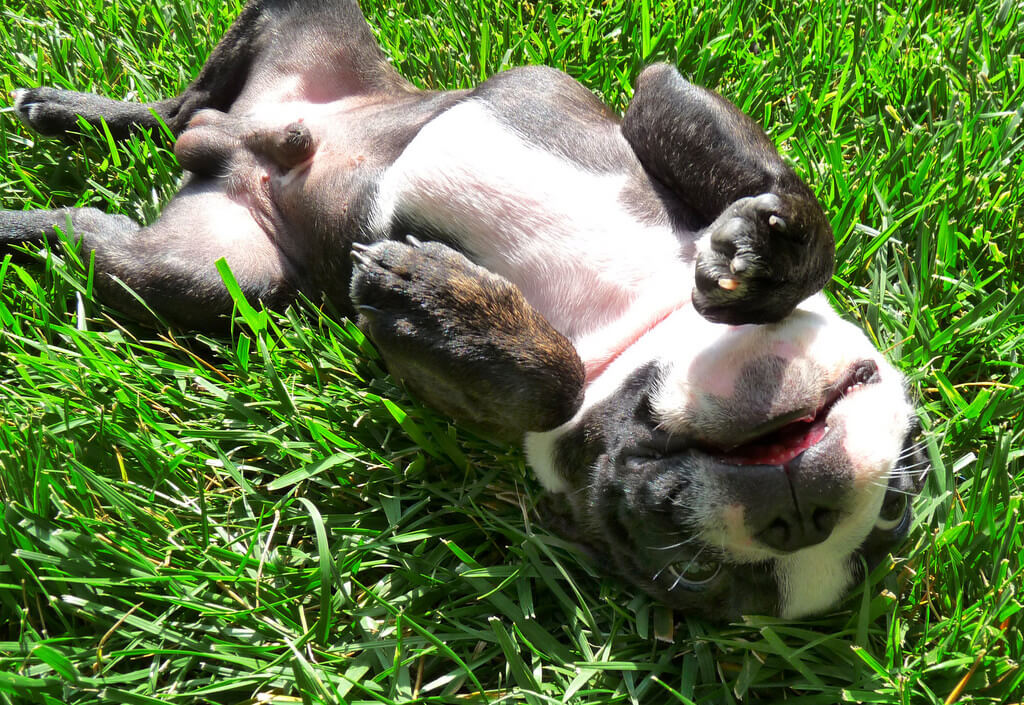
Were you aware of all 10 threats in your backyard? Which ones were a surprise?
Source:
“Poisonous Plants.” ASPCA, www.aspca.org/pet-care/animal-poison-control/toxic-and-non-toxic-plants?field_toxicity_value%5B%5D=01.













We have many species of mushrooms in our yard. I go searching every day to pick them before our dog finds them. He’s ingested some that have caused diarrhea and stomach upset, but others are lethal to dogs.
We’ve also realized dogs ingest rabbit droppings, and our dog gets an upset stomach from it, inevitably leading to him vomiting.
We have the same problem here in Southern Cali’. Red mushrooms which I can not find if they are bad. I am just assuming they are bad. And she loves rabbit poop. She always seems to have an upset stomach lately and doesn’t want to eat.
Might be worth taking her in to see a vet just to make sure there isn’t an underlying cause for her upset stomach. Thanks for stopping by and I hope your pup is feeling better by now!
I am on board with the majority of your tips, but give me a break! Sticks? Dogs & sticks go together like hands and gloves. By your standards, I would have to muzzle my dog 24/7 because no one can watch them that closely. Years ago we had a 10 month yellow lab that decided my 6 yr old son’s underwear tasted good; we found out by X-ray and surgery. You can’t prevent everything. You’ll drive yourself insane trying.
When I was 8 I walked into my backyard and found one of our dogs, cubbie, dead with a half chewed stick resting between his paws and blood gushing out of his mouth.
So sorry that happened to you, Terry. Thanks for sharing your experience.
I know it seems silly, but these are items veterinarians have stated can cause problems for dogs. While chewing on a stick is not particularly dangerous, a dog can be at risk if he swallows a part of the stick – even a small part. Larger pieces can cause impaction or serious punctures. As stated by a commenter, dogs have been injured catching sticks. I think you bring up a good point, though. We can’t protect them from every danger. But being aware of the dangers veterinarians warn us against can’t hurt either.
Bees are everywhere as well. Dogs can have severe reactions as well as humans.
Yes my sisters dog died from reaction of a bumblebee. Vet says to keep liquid benadryl handy as capsules dont get in system fast enough
Good point. Thanks for sharing, Michele!
Yup sticks,I had a dog trainer friend whose dog caught a stick mid air which impaled his throat.Whole emergency room
Visit.$$$$ I never use sticks only size appropriate balls,My rotti once got a ball stuck in her throat.Fortunately I was home So yeah stuff happens.Better safe.
Thanks for your input, Gretchen!
Large birds such as hawks or some owls can swoop down and carry off small dogs and puppies.
Perhaps a brief mention of that would help protect our little family member.
Good point. Thanks for sharing!
Everything is dangerous, so keep they sealed in bubble wrap. Got it!
We can’t protect them from everything. But being aware of the dangers can be helpful, especially if something DOES happen. Thanks for weighing in on this topic.
Interestingly i often feed my dogs with garlic or chives which grow in my yard with no problems. I would like to know how garlic or chives can affect dogs.
From the Pet Poison Hotline: “Toxic doses of chives can cause damage to the red blood cells (making them more likely to rupture) leading to anemia. … Signs of chive poisoning can be delayed and not apparent for several days. While tiny amounts of these foods in some pets, especially dogs, may be safe, large amounts can be very toxic. Garlic belongs to the Allium family (which also includes onion, chives, and leeks) and is poisonous to dogs and cats. Garlic is considered to be about 5-times as potent as onion and leeks. Certain breeds and species are more sensitive, including cats and Japanese breeds of dogs (e.g., Akita, Shiba Inu). Toxic doses of garlic can cause damage to the red blood cells (making them more likely to rupture) leading to anemia. GI upset can also occur (e.g., nausea, drooling, abdominal pain, vomiting, diarrhea). Other clinical signs of anemia can also occur including lethargy, pale gums, increased heart rate, increased respiratory rate, weakness, exercise intolerance, and collapse. Signs of garlic poisoning can be delayed and not apparent for several days. While tiny amounts of these foods in some pets, especially dogs, may be safe, large amounts can be very toxic.” Thanks for asking the question, Joseph!
Also Bees! My sister’s yorkie was stung by a bumblebee and had an allergic reaction of vomiting and diarrhea. She died within hours. Vet told us to keep liquid benadryl handy instead of capsules. Said it may have helped.
So sorry to hear of your sister’s loss, Amy. Thank you for sharing your experience here for other dog lovers, including the remedy of liquid Benadryl.
This is insane . Just watch your dog and be aware and remember your in control of what he eats.
Also, beware of snakes and poisonous toads, especially if you live in Florida. I have had friends who have told me of encounters with coral snakes, poisonous toads , and even pythons. We also have iguana that get huge and can bite! Dogs, like small children should not play outside unsupervised.
Good points! Thanks for sharing.